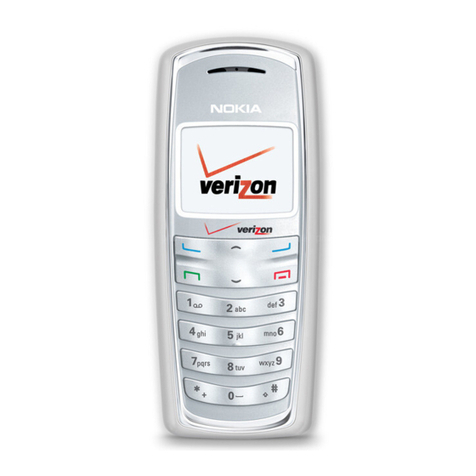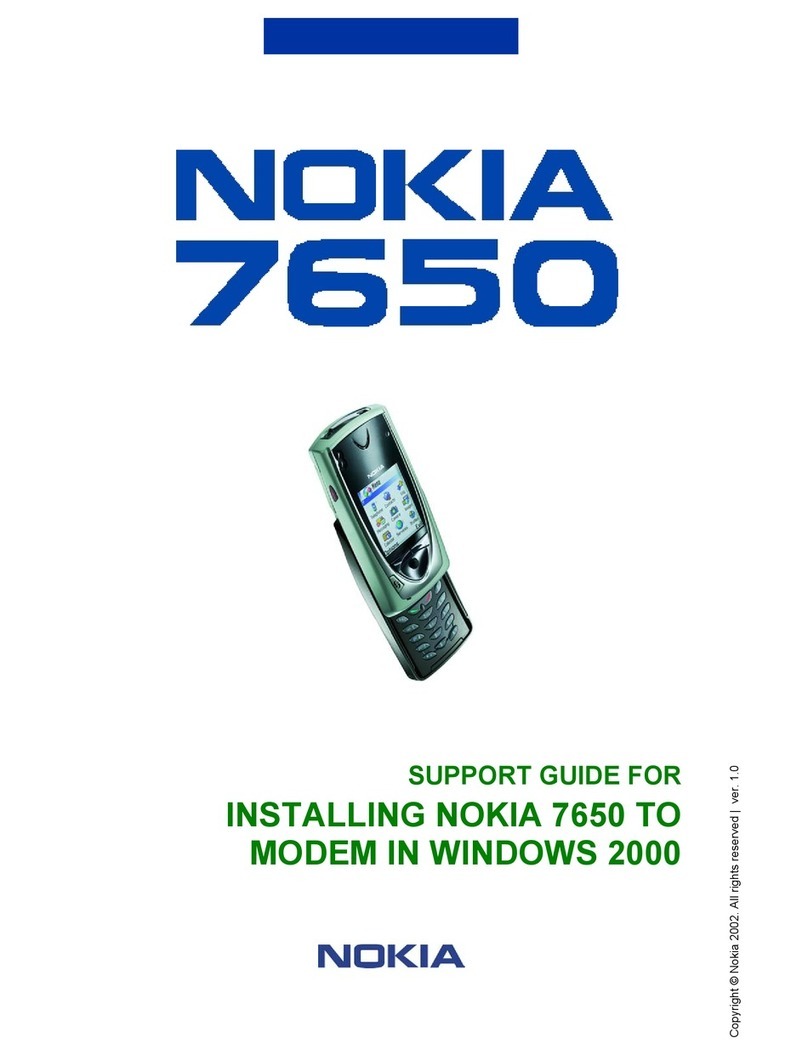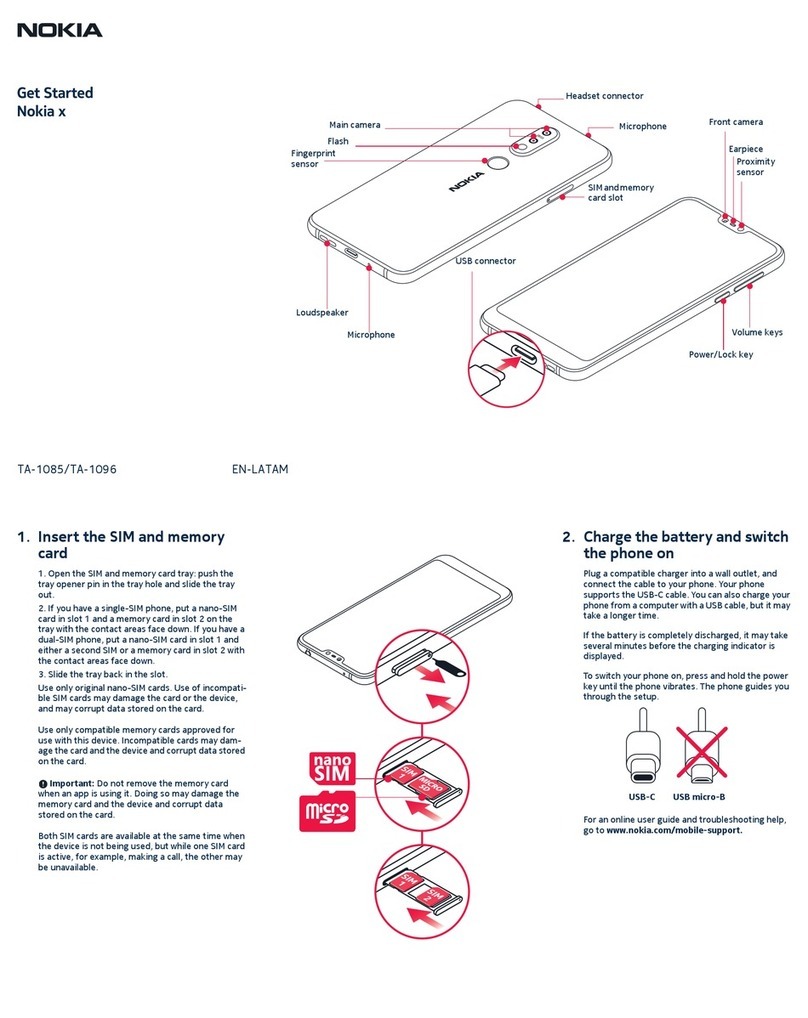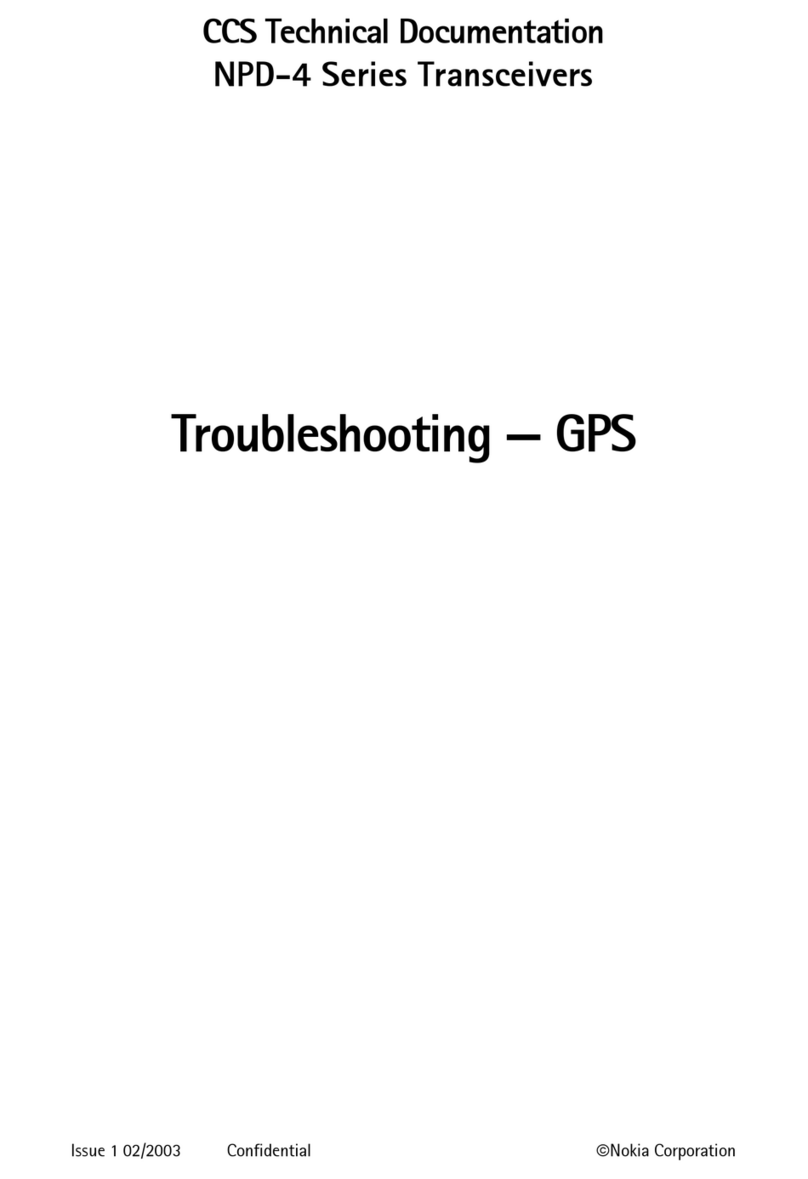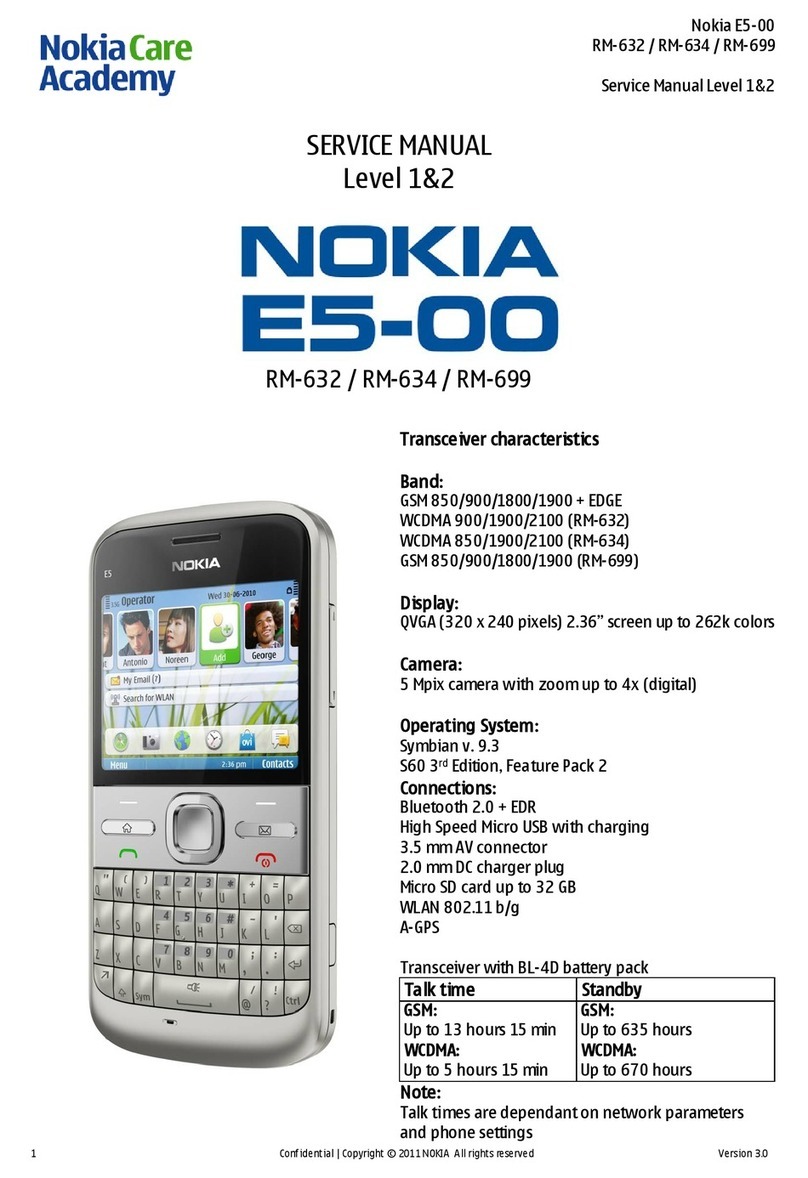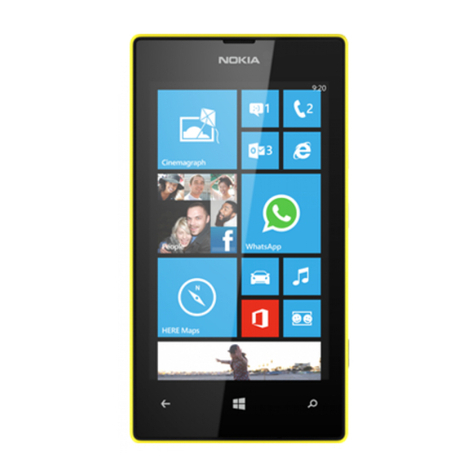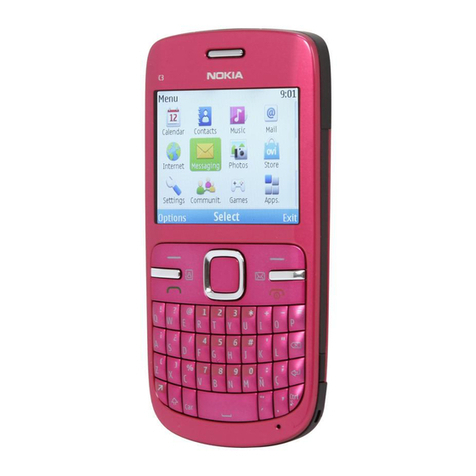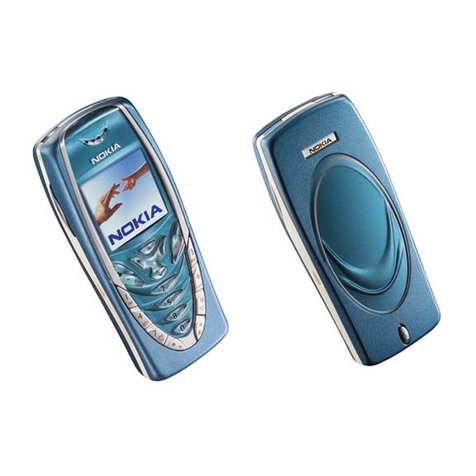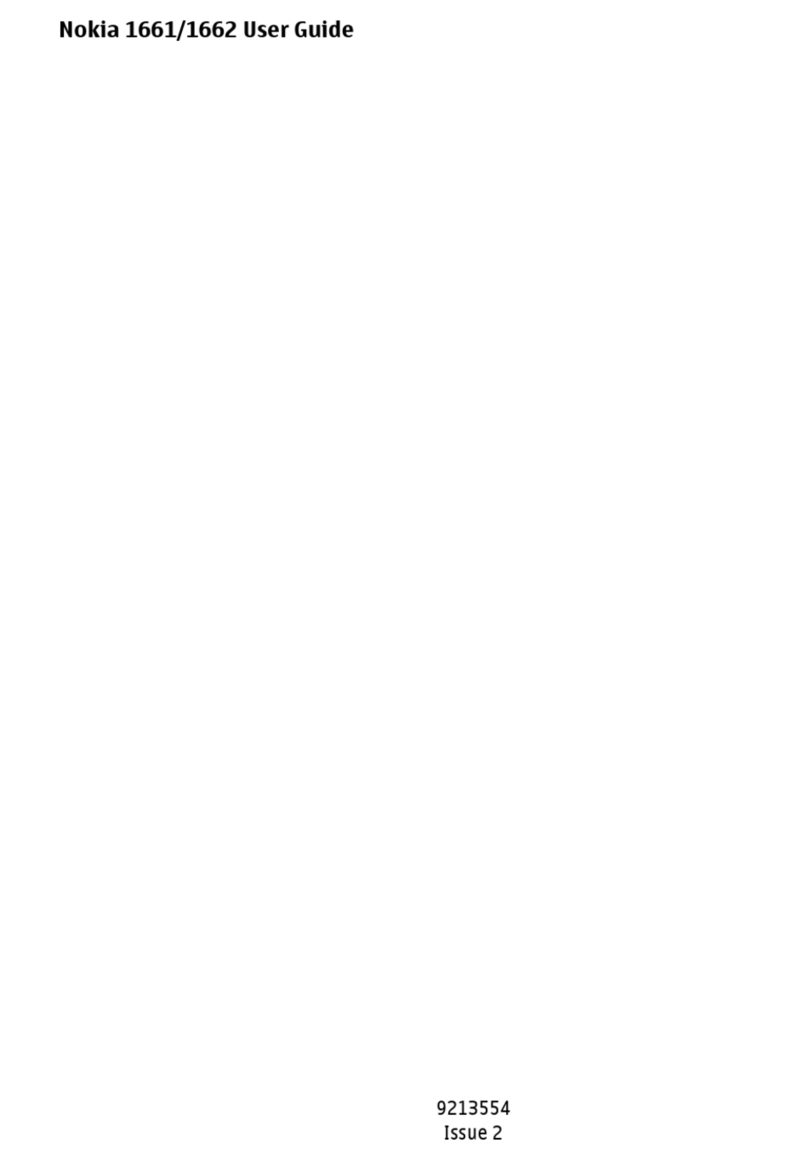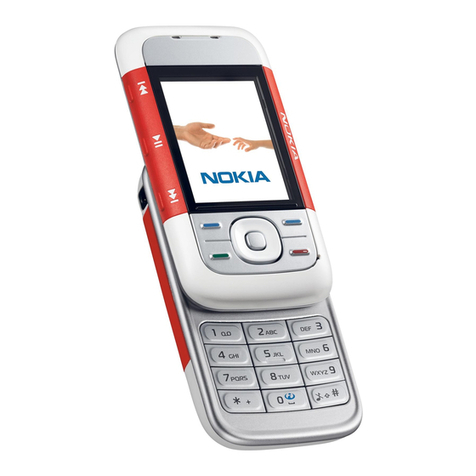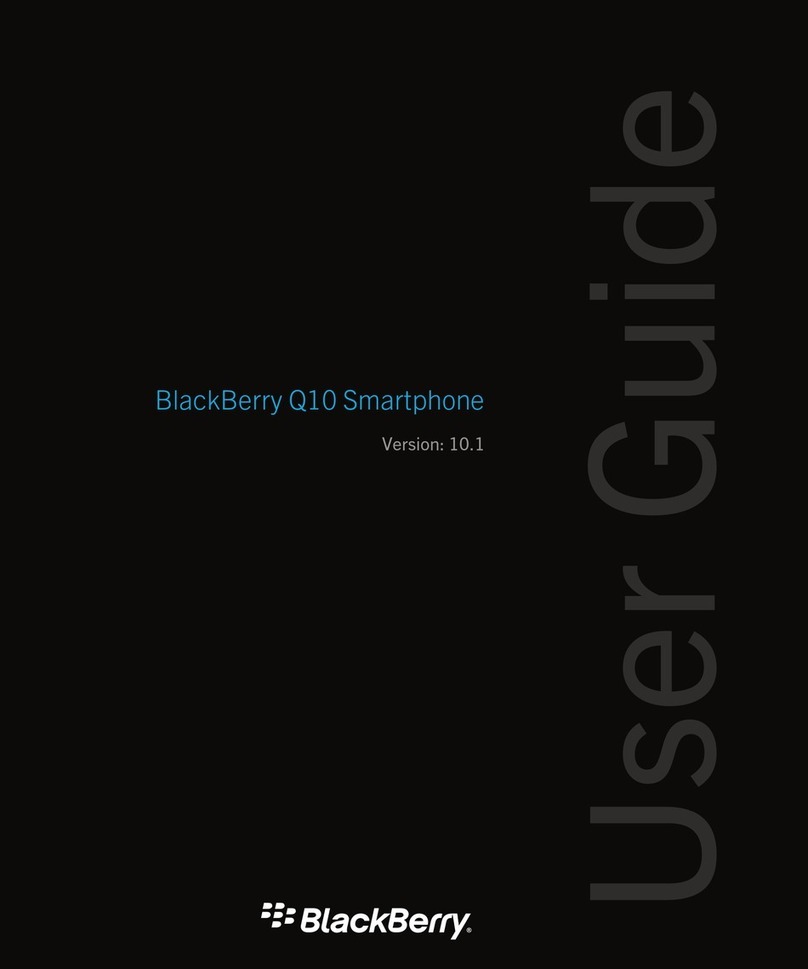
3
Nokia products may be covered by the following U.S. Patents.
4868846 4945633 5001372 5053928 5083240 5101175 5124672
5151946 5152004 5173927 5212834 5230091 5241583 5266782
5271056 5311151 5317283 5331638 5335362 5341149 5353328
5371481 5378935 4969192 5384782 5390223 5392460 5396657
5400949 5408504 5416435 5430740 5442521 5444816 5446364
5446422 5477422 5479476 5487084 5526366 5534878 5548616
5551067 5553125 5557639 5565821 5566201 5570369 5581244
5594797 5600708 5606548 5613235 5625274 5640395 5664053
5675611 5677620 5692032 5697074 5699482 5701392 5722074
5729541 5754976 5760568 5787341 5794142 5797102 5802465
5805301 5809413 5819165 5821891 5822366 5827082 5835858
5835889 5839101 5842141 5844884 5845219 5850607 5857151
5859843 5862178 5870683 5884103 5884190 5889770 5898775
5898925 5903832 5903839 5907823 5912570 5914690 5914796
5917868 5920826 5926147 5926769 5929813 5930233 5946651
5953665 5956332 5956625 5311179 5956633 5960354 5960389
5963901 5966378 5977887 5983081 5987137 5519885 5987639
5991857 6005857 6006114 6009328 6011853 6011971 6014113
6014551 6014573 6025802 6026161 6028567 6031827 6035189
6035194 6038238 6043760 6047196 6049796 6050415 6054954
6054966 6055439 6060193 6069923 6072787 6073001 6079993
6081732 6084471 6084855 6084920 6084962 6088746 6094587
6097964 6105784 5699406 6112099 6115617 6118775 6119002
6119180 6121846 6122498 6128322 6128509 6130650 6133884
6137789 6138091 6140966 6144243 6144676 6148209 6151485
6151507 6163609 6164547 6167038 6167248 6167273 6170073
6171127 6178535 6182101 6184592 6185295 6185302 6185422
6188909 6195338 6199035 6201712 6201876 6202109 6219560
6223037 6223059 6230020 6240076 6249584 6259312 6262735
6266321 6266330 6269126 6271794 6272361 6282436 6285888
6292668 6295286 6307512 6308084 6311054 6314166 6317083
6324389 6324412 6333716 6347218 6356759 6359865 6359904
6363259 6370362 6370389 6377803 6377820 6381468 6385254
6385451 6392605 6392660 6400958 6417817 6430163 6434133
6437711 6438370 6445932 6453179 6456237 6456826 6463278
6470470 6487397 6510148 6522670 6591116 6606508 5729534
5782646 5887266 5892475 5915440 5926138 5966374 5991716
6029128 6081534 6198928 6240079 6310609 6487424 5564074
5806003 5832381 5862489 5946634 5991627 6091717 6094426
6243455 6300887 6370390 6415163 6430721 6470313 6477151
6487288 6493564 6501957 6532226 6535979 6539236 6542931
6560460 6570860 6584089 6584161 6584314 6594486 6597914
6603773 6606593 6611507 6615169 6636491 6643513 6650905
6658064 6662155 6671286 6671511 6678361 6678531 6680955
6681099 6691085 6697347
